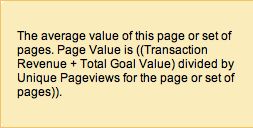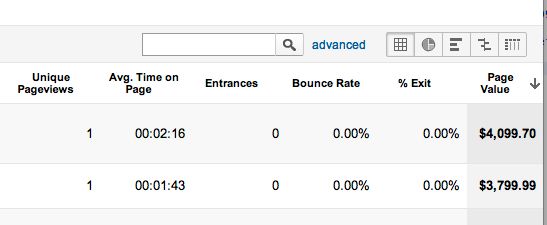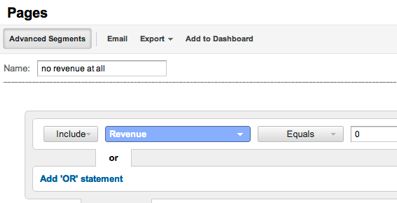Page Value in Google Analytics
I am really happy that $ Index is back in Google Analytics as Page Value. I had written about $ Index before but I think it’s worth taking a quick refresher.
- The topline page value is not that useful – at least not to me.
According to the tooltip,
The way I read this is that you should be able to multiply Page Value by Unique Pageviews to get the overall Revenue, but that’s not the case. You get a number that is far higher than the actual revenue. Not to worry, that’s just the way the attribution model works.
- The useful data is in the table itself, so how do you find your most valuable pages?
****If you sort the Page Value column you’ll likely get onesies with very large page values, but very little traffic.
As Justin explains you can use an advanced filter to restrict the data to pages with more traffic, but I actually hope that you will be able to use weighted sort again on the column.
Weighted sort is still one of my favorite ways to look at data. Your most important pages naturally bubble up because weighted sort takes into account traffic.
- Ironically perhaps, a unique feature of Page Value is to be able to find those pages that drive absolutely no revenue.
I don’t think you can get this data if you tried to create an advanced segment:
Remember that segments work on sessions. This segment will match all sessions that have no revenue and will therefore still include all your main pages, such as your homepage. It will just list the non-converting sessions.
What you can do instead is use an advanced filter:

This will show you all pages that were never part of any conversion. You can even see the percentage of those “bad” pages:
Before you apply the filter, make a note of the number of pages:
Then apply the filter and look again:
Ouch! In my example, 21261 out of 28771 pages are never part of any transaction.
I hate to be the bearer of bad news, but at the very least these are good targets for optimization!







